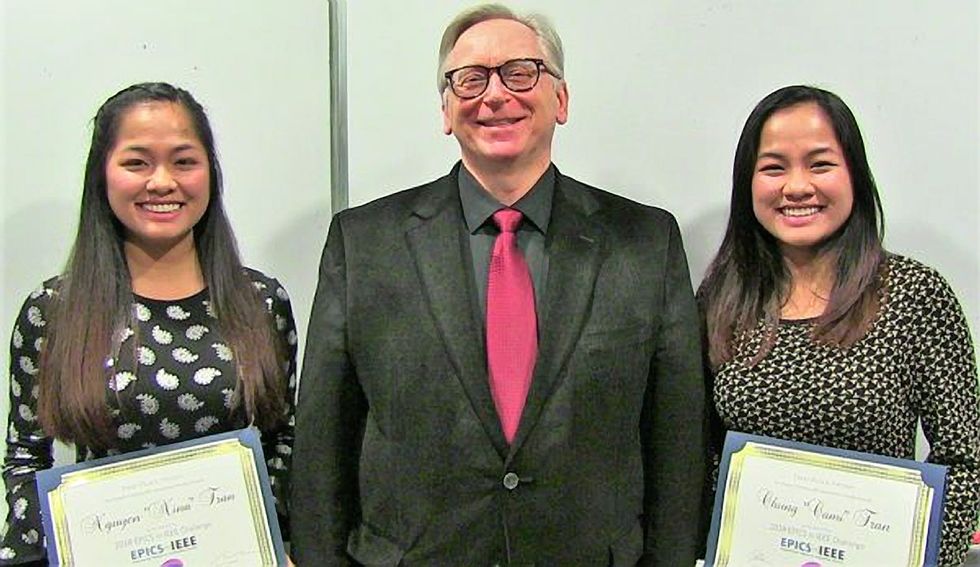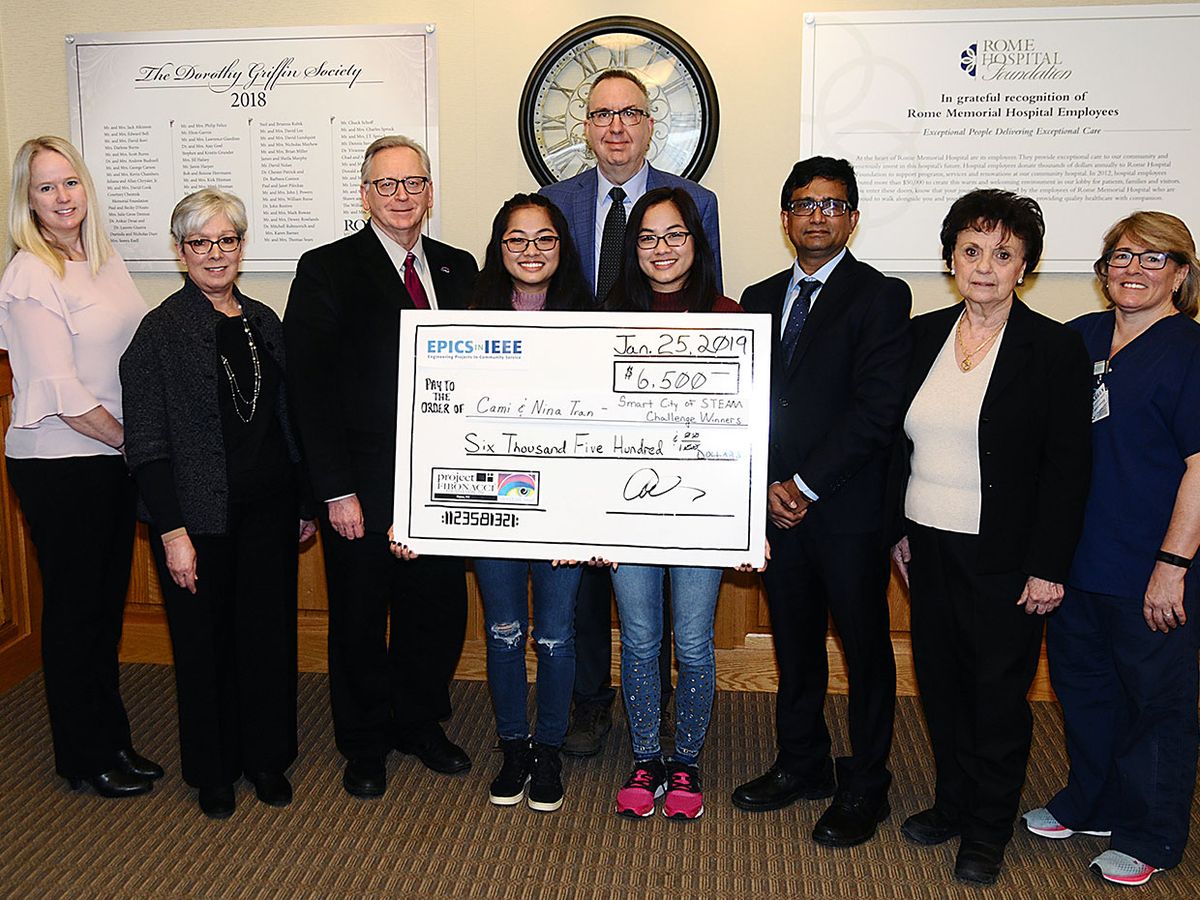THE INSTITUTETwin sisters Cami and Nina Tran [above] won first place in the 2018 EPICS in IEEE Challenge for their proposal to design 3D-printed shoes for people with lymphedema. The high school students received US $6,500 to develop their project, and each was given a $2,000 college scholarship.
Lymphedema is most commonly caused by the removal of or damage to lymph nodes as a part of cancer treatment. It results from a blockage in the lymphatic system, which is part of the immune system. The blockage prevents lymph fluid from draining well, leading to swelling in the arms and feet.
Hundreds of millions of people worldwide suffer from lymphatic diseases, according to the Lymphatic Education and Research Network. To manage the chronic condition in the legs, compression bandaging is used, but that treatment adds girth to patients’ ankles, making it harder to find shoes that fit.
The Trans, who are seniors at Colonie Central High School, in New York, participate in the science and technology entry program (STEP) at Albany Medical College.
Funded by the IEEE Foundation, EPICS in IEEE empowers students to apply technical solutions to aid community organizations. The Project Fibonacci Foundation, a nonprofit in Rome, N.Y., that promotes STEAM education, sponsored the challenge. The contest was open to students who had participated in events run by the foundation, such as STEP. Proposals were required to help solve a problem for a local nonprofit. The Trans chose Rome Memorial Hospital.

TAILORED FOOTWEAR
As part of their research, the Trans spoke to the hospital’s patients, doctors, nurses, and physical therapists to get a better understanding of the disease. They discovered that most patients cannot wear orthopedic shoes, because they are not wide enough to fit over their swollen ankles and the bandages. Moving up to the next shoe size makes it difficult to walk, sometimes leading to falls. Also, shoes must be adjustable to accommodate changes in the swelling, which tends to get worse as the day progresses.
The students plan to use a 3D printer to make stretchable shoes from elastic materials. Their design likely will include Velcro straps at the back of each shoe. The Trans plan to make prototypes in different shoe sizes for Rome Memorial patients.
Members of the IEEE Mohawk Valley Section are ready to mentor the Trans. They include IEEE Fellow Robert Bojanek, cofounder of ShoreGroup, an IT solutions company in New York City. ShoreGroup funded the scholarships.
The members plan to teach the students how to apply engineering principles in designing the footwear and making prototypes. That includes teaching the twins how to use a 3D printer and computer-aided design software. When the sisters deliver the prototypes, they’ll receive the scholarships.
This article was written with assistance from EPICS in IEEE, which is funded by donations to theIEEE Foundation’s Realize the Full Potential of IEEE Campaign
